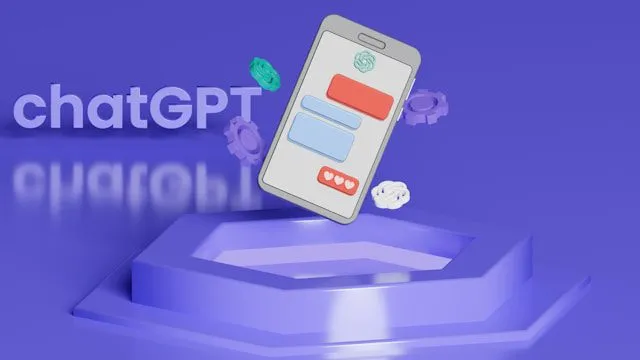Google AI Overview
How Google’s Artificial Intelligence Is Shaping the Future
Google AI Overview: Artificial Intelligence (AI) is no longer a futuristic concept—it’s here, embedded deeply in our daily lives, often without us even realizing it. Among the pioneers of this technological evolution, Google AI stands as a monumental force, blending innovation with practical solutions to enhance how we live, work, and interact with the digital world. From smart assistants and autonomous vehicles to advanced healthcare diagnostics and natural language understanding, Google’s AI technologies are redefining the boundaries of possibility.
This comprehensive overview explores the core technologies, advantages, applications, and future trajectory of Google AI. We’ll cover its benefits across industries, its role in democratizing information, and how it’s reshaping everything from small businesses to global infrastructures.
What Is Google AI?
Google AI refers to the suite of artificial intelligence tools, services, and research efforts created and maintained by Google. Launched officially as a division in 2017, Google AI combines deep learning, machine learning (ML), neural networks, natural language processing (NLP), and computer vision into one integrated platform. It powers everything from Google Search and Google Translate to products like Google Assistant, Gmail, Google Photos, and Waymo.
At its core, Google AI seeks to:
- Solve real-world problems using data-driven insights.
- Democratize access to powerful AI tools.
- Advance research in responsible, ethical AI.
- Help individuals and organizations innovate more efficiently.

Key Technologies Behind Google AI
a. TensorFlow
One of Google AI’s crown jewels is TensorFlow, an open-source machine learning platform that allows developers to build, train, and deploy AI models at scale. It supports a wide range of tasks such as image recognition, NLP, and data analysis.
Advantages:
- Scalable architecture for both beginners and experts.
- Extensive documentation and community support.
- Supports production-ready deployment.
b. TPU (Tensor Processing Unit)
Custom-developed by Google, TPUs are specialized hardware accelerators designed to handle the computational intensity of training AI models.
Advantages:
- Faster processing of complex models.
- Energy-efficient compared to traditional CPUs/GPUs.
- Available on Google Cloud for enterprise use.
c. BERT & Gemini Models
BERT (Bidirectional Encoder Representations from Transformers) revolutionized natural language understanding and powers many of Google’s search algorithms. In 2023, Google unveiled Gemini, a powerful multimodal model series that integrates vision, text, and reasoning for even more dynamic AI applications.
Advantages:
- Improved context understanding.
- Better search results and AI conversations.
- Enhanced customer service automation.
Advantages of Google AI
a. Enhanced User Experience
Google AI is embedded in everyday apps—Google Maps suggests the fastest routes, Gmail predicts email replies, and Photos categorizes your memories automatically. These features not only increase convenience but also improve time management and efficiency.
b. Efficient and Accurate Search Results
Google Search now uses AI not just to match keywords, but to understand intent and context. AI algorithms, such as BERT and MUM (Multitask Unified Model), allow the engine to process and interpret complex queries more accurately than ever before.
Real-life impact:
- Better results for long-tail queries.
- Reduction in false or misleading search suggestions.
- Personalized and localized answers.

c. AI for Business Innovation
Through Google Cloud AI and Vertex AI, businesses can build custom models without deep technical knowledge. Companies leverage AI for:
- Predictive analytics.
- Customer sentiment analysis.
- Supply chain optimization.
- Fraud detection in financial services.
d. Automation at Scale
AI automates repetitive tasks like data entry, analysis, content moderation, and customer queries. This frees up human talent for higher-level, strategic work.
Sectors benefiting include:
- E-commerce
- Healthcare
- Banking
- Transportation
Google AI in Healthcare
One of the most promising applications of Google AI lies in healthcare. Google’s DeepMind, along with its Health division, is working on diagnosing diseases, predicting medical outcomes, and even assisting in drug discovery.
Key Projects:
- AI-assisted cancer detection: More accurate mammograms and early-stage detection of breast cancer.
- Retinal scans for diabetes: AI models can detect diabetic retinopathy with higher accuracy than traditional methods.
- COVID-19 modeling: AI helped track and forecast the spread and impact of the virus.
Advantages:
- Increased diagnostic accuracy.
- Reduced workload for medical staff.
- Faster processing of large datasets in medical research.
Google AI in Education
Google has introduced AI-powered tools like:
- Read Along: An educational app that helps children learn to read using speech recognition.
- Google Classroom: Integrated with AI to personalize learning and provide real-time feedback.
- Practice Sets: Teachers can create exercises that adapt to a student’s progress.
Benefits:
- Personalized learning experiences.
- Real-time support for students and educators.
- Efficient grading and progress tracking.
Google AI in Environment and Sustainability
Projects like:
- Project Sunroof: Uses AI and satellite imagery to calculate potential solar energy production for homes.
- Wildlife monitoring: AI models trained to detect and prevent poaching or monitor endangered species.
- Climate change modeling: Tools that assist researchers in analyzing climate patterns and proposing interventions.
Advantages:
- Informed decisions for sustainability.
- Real-time environmental monitoring.
- Smarter urban and energy planning.
Would you like me to continue with the second half of the article, which will include:
- AI in creativity (music, art, content)
- Ethics and responsible AI from Google
- Impact on jobs and future workforce
- Global access and democratization
- Challenges and criticisms
- Future directions and innovation roadmap
- Conclusion with final thoughts
Google AI in Creativity and Content Generation
Artificial Intelligence is not limited to logic-based applications—it has expanded into creative fields, allowing machines to compose music, create artwork, write articles, and generate videos. Google AI has developed tools and platforms that push the boundaries of human-computer creativity.

Tools and Initiatives:
- Magenta: An open-source research project that explores the role of machine learning in the creative process, particularly in music and art.
- AutoDraw: A drawing tool that uses AI to recognize doodles and match them with professional illustrations.
- Verse by Verse: An experimental poetry assistant that helps users co-write poems with guidance from great poets of the past.
Benefits:
- Empowers non-artists to create meaningful work.
- Speeds up creative workflows.
- Inspires new forms of human-AI collaboration.
Creative professionals use AI to brainstorm concepts, write drafts, animate graphics, and even assist in filmmaking, blurring the lines between tool and collaborator.
Ethics and Responsible AI Development
With great power comes great responsibility—and Google has recognized this by establishing AI Principles that guide the ethical development and deployment of AI technologies.
The 7 AI Principles by Google:
- Be socially beneficial.
- Avoid creating or reinforcing unfair bias.
- Be built and tested for safety.
- Be accountable to people.
- Incorporate privacy design principles.
- Uphold high standards of scientific excellence.
- Be made available for uses that accord with these principles.
Google also created the Advanced Technology External Advisory Council (ATEAC) and internal ethics review boards to ensure that AI projects align with these values.
Advantages of Ethical AI:
- Promotes trust among users.
- Minimizes unintended harms.
- Encourages responsible innovation.
AI tools that consider fairness, privacy, and security are more likely to be accepted and used widely across diverse communities.
AI’s Impact on Jobs and the Workforce
Google AI doesn’t only replace tasks—it augments them. Rather than eliminating jobs, AI often shifts human roles to focus on higher-value tasks, creating a need for deskilling and upskilling.
How Google AI is transforming work:
- Customer Service: Chatbots like DialogFlow handle FAQs, allowing agents to manage complex issues.
- Marketing: AI analyzes user behavior and optimizes campaigns.
- Finance: AI models assess credit risk, detect fraud, and automate bookkeeping.
Workforce Benefits:
- Increases productivity.
- Reduces human error.
- Unlocks innovation through smarter tools.
However, Google also invests in AI literacy and training programs like Grow with Google, helping people learn how to thrive in an AI-powered world.
Democratizing AI: Access for All
Google believes that access to AI should not be limited to tech giants. That’s why it offers a range of developer-friendly platforms and open-source tools.
Examples:
- Google Colab: Free cloud-based Jupyter notebooks for machine learning.
- TensorFlow Lite: Enables machine learning on mobile and edge devices.
- AutoML: Allows non-experts to train AI models without writing code.
Results of Democratization:
- Small businesses can leverage AI for growth.
- Students and researchers can experiment with cutting-edge technology.
- Developers in underrepresented regions gain access to global resources.
By making AI more accessible, Google is enabling a more inclusive and innovative global tech ecosystem.
Challenges and Criticisms of Google AI
Despite its many strengths, Google AI is not without criticism. Transparency, data privacy, bias, and algorithmic accountability have been key concerns raised by researchers, governments, and users.
Common Criticisms:
- Data Collection: Some fear that AI tools require excessive data, raising privacy concerns.
- Bias in Algorithms: Like all AI systems, Google AI can inherit and amplify societal biases if not carefully monitored.
- Monopoly Power: Google’s dominance raises concerns about a few entities controlling AI development.
Google’s Response:
- Publishing peer-reviewed research on AI fairness.
- Offering “explainable AI” (XAI) tools to clarify model decisions.
- Allowing users more control over their data and privacy settings.
Addressing these challenges openly is crucial to building trust and long-term sustainability in AI systems.
Future Trajectory and Innovation Roadmap
The future of Google AI is increasingly multimodal, conversational, and integrated into every facet of digital life. In 2023 and 2024, Google unveiled major updates that show where the company is heading.
Key Future Directions:
a. Gemini AI Models
Gemini, the successor to BERT and Palm, is designed to handle multimodal tasks—processing text, images, audio, and video seamlessly. It powers future versions of:
- Google Bard (AI chatbot)
- Google Search with integrated conversational results
- Google Workspace tools (Docs, Gmail, Meet, etc.)
b. AI-Powered Hardware
Google’s Pixel phones, Nest devices, and future wearables are incorporating on-device AI for:
- Real-time translation.
- Live transcription.
- Smart photography and video editing.
c. Quantum AI
Through Google Quantum AI, the company is pushing the boundaries of computation with quantum processors capable of solving problems no classical computer can.
d. AI in Robotics
DeepMind and Everyday Robots are using reinforcement learning to train robots to perform tasks like sorting trash, organizing items, or navigating complex environments.
What This Means:
- AI becomes more intuitive and human-like.
- Greater personalization of digital experiences.
- Advanced problem-solving in science and engineering.
Use Cases Across Industries
a. Retail
- Personalized recommendations.
- Inventory forecasting.
- AI-driven ads and marketing insights.
b. Finance
- Loan risk analysis.
- AI-assisted portfolio management.
- Fraud prevention.
c. Agriculture
- Crop health monitoring via satellite AI.
- Smart irrigation systems.
- Yield prediction using historical data and weather models.
d. Media and Entertainment
- Real-time captioning and translation.
- AI-generated music and voiceovers.
- Content moderation using computer vision.
AI’s influence is rapidly expanding, driven by Google’s robust cloud infrastructure and machine learning APIs.
Google AI’s Role in Global Collaboration
Through partnerships with governments, NGOs, and academic institutions, Google AI is contributing to global progress in:
- Disaster response: AI helps predict floods, wildfires, and earthquakes.
- Language preservation: Google Translate aids in digitizing endangered languages.
- Humanitarian efforts: Google.org funds AI projects that tackle social inequality.
Examples include:
- AI-powered earthquake early warning systems.
- Wildlife protection with camera traps and image recognition.
- Crisis response mapping for real-time disaster relief.
By leveraging its technological resources, Google positions AI not just as a profit engine but as a force for good.
Conclusion: Google AI—Empowering the World One Algorithm at a Time
In just a few years, Google AI has become a cornerstone of innovation, touching nearly every aspect of life. Its platforms, tools, and models are advancing not just business efficiency and consumer convenience but also health, education, sustainability, and creativity.
Summary of Key Advantages:
- Seamless integration into daily tools and services.
- Scalable solutions for enterprises and individuals alike.
- Open-source tools that democratize AI development.
- Powerful research in health, climate, education, and more.
- Strong ethical foundations to guide future development.
As AI becomes increasingly central to the global digital economy, Google continues to lead with an ambitious vision grounded in accessibility, responsibility, and impact.
Whether you’re a business leader, developer, researcher, artist, or everyday user, Google AI offers the potential to unlock new possibilities, solve complex challenges, and reshape the future for generations to come.
How to Start Using Google AI Tools
Whether you’re a small business owner, developer, educator, or curious enthusiast, the ecosystem of Google AI is surprisingly accessible. You don’t need to be a data scientist to benefit from the capabilities of AI. Here’s how different users can begin leveraging Google’s AI technologies:
a. For Developers
- Start with TensorFlow or Keras. These frameworks offer flexibility for creating custom AI models.
- Explore Google Cloud AI: Provides powerful pre-trained models (like Vision AI, Natural Language AI) and AutoML services.
- Use Google Colab: A free cloud-based Python notebook environment to experiment with ML models, even with GPU support.
b. For Non-Technical Users
- Try Google’s AI tools inside Google Workspace: Smart Compose in Gmail, Docs’ grammar suggestions, or even Meet’s live captions are all AI-powered.
- Utilize AutoML: Enables the creation of models without coding, ideal for marketers, entrepreneurs, and analysts.
- Experiment with AI Experiments: Google offers fun and accessible projects where users can play with machine learning concepts through art, voice, and games.
c. For Educators and Students
- Explore Google for Education: Offers free tools that integrate AI to personalize student learning experiences.
- Use Read Along and Socratic by Google: Excellent for literacy, math, and science learning through interactive AI.
- Access AI training resources: Google AI’s official website features beginner-friendly courses and documentation.
By aligning with users of all levels, Google ensures that AI is not an exclusive tool but an empowering one.
Training and Certification with Google AI
To foster global competency in artificial intelligence, Google provides structured learning paths and certifications:
a. Google Cloud AI Learning Path
- Machine Learning with TensorFlow on Google Cloud Specialization (Coursera)
- Data Engineering, Big Data, and Machine Learning on GCP
- Vertex AI: QwikLabs-based tutorials and interactive training
These certifications offer both foundational and advanced learning opportunities for:
- Data Scientists
- ML Engineers
- Cloud Architects
Benefit: Certified professionals gain a competitive edge in the job market and are better equipped to implement ethical, effective AI systems.
Integrating Google AI into Everyday Business
Even for businesses without large technical teams, integrating Google AI can produce transformative results.
Practical Examples:
- Retail: Predict stock demand using AutoML Tables.
- Marketing: Use Google Ads AI to optimize ad placement and budget allocation.
- Customer Support: Deploy Dialogflow-powered chatbots to automate routine inquiries.
- HR and Hiring: Use AI for resume screening and applicant matching via Google Cloud tools.
Strategic Tips:
- Start Small: Use pre-trained models and APIs to solve simple problems.
- Focus on ROI: Prioritize AI tools that will have immediate business impact.
- Test and Iterate: Use A/B testing to measure the effectiveness of AI implementations.
- Stay Ethical: Be transparent with users when deploying AI (e.g., use disclaimers with chatbots).
The Future of Human and AI Collaboration
As Google continues to refine its AI systems, the vision is clear: AI will not replace humans—it will work alongside them to create more value, more insight, and more time for meaningful activities.
Where We’re Headed:
- Ambient AI: AI that fades into the background, helping users without direct interaction.
- Conversational Interfaces: AI assistants that understand complex dialogues and perform multi-step tasks.
- Personalized Digital Twins: AI versions of ourselves that can handle repetitive tasks, manage calendars, and even shop on our behalf.
- Cross-platform Intelligence: Seamless movement of AI capabilities across phone, desktop, home, and car.
Google’s AI is paving the way toward a world where technology amplifies humanity, allowing individuals to focus on creativity, compassion, innovation, and deep thinking.
Final Reflections
In an era of exponential change, Google AI stands as one of the most influential forces shaping not just the future of technology but the trajectory of global human development. Its tools are everywhere—from the maps that guide us to the emails we write, the images we edit, and the diseases we aim to cure.
Why It Matters:
- AI is becoming a utility—like electricity or the internet.
- Its presence in every industry means no business or individual can afford to ignore it.
- Ethical use, accessibility, and education are vital for maximizing its potential while minimizing its risks.
Whether you’re an executive planning your next big move, a teacher trying to inspire young minds, a creator breaking artistic boundaries, or a curious learner exploring what’s possible—Google AI is here to amplify what you can achieve.
As the world marches into a smarter, faster, and more interconnected era, Google AI is more than a product or platform. It is a partner in progress.


